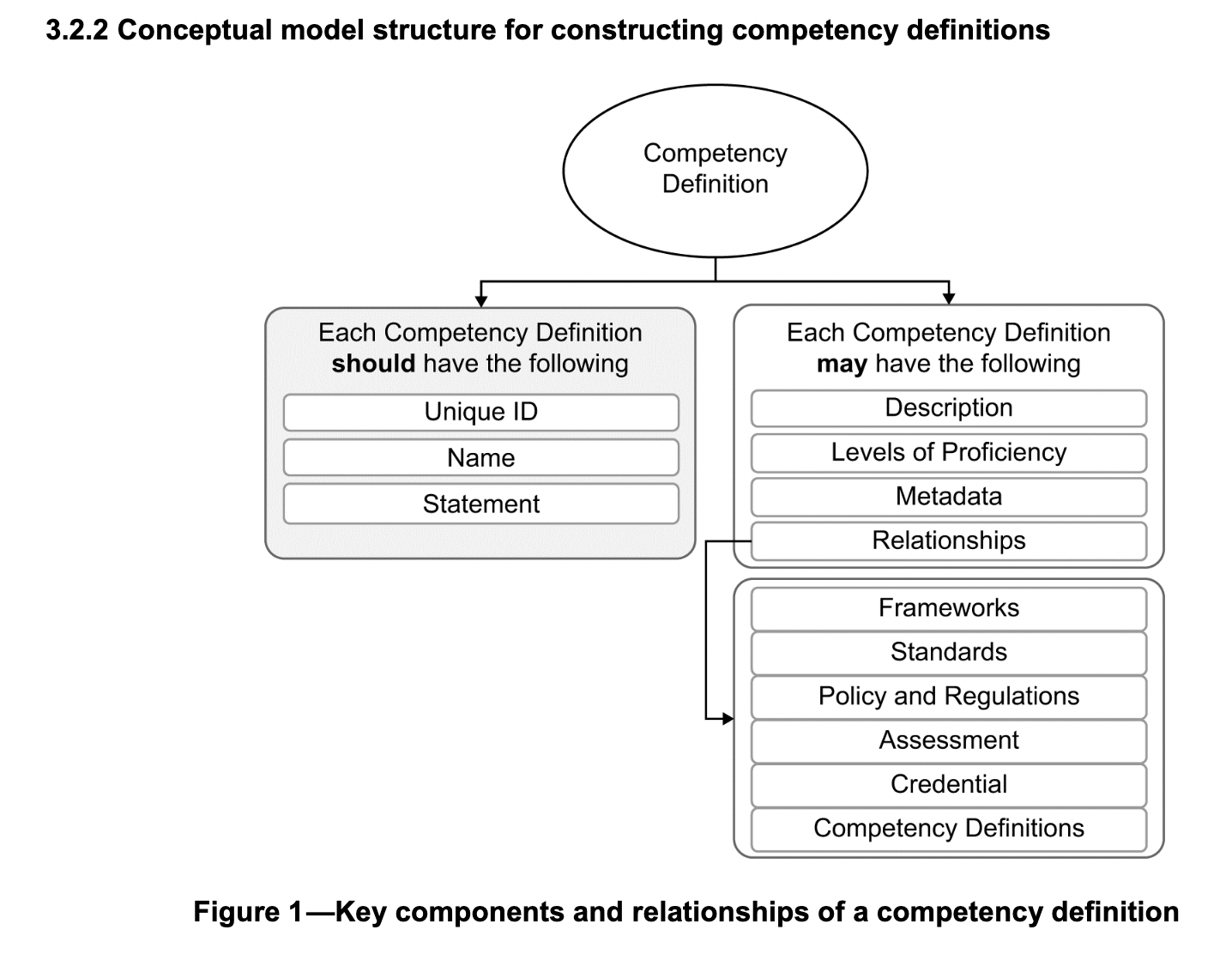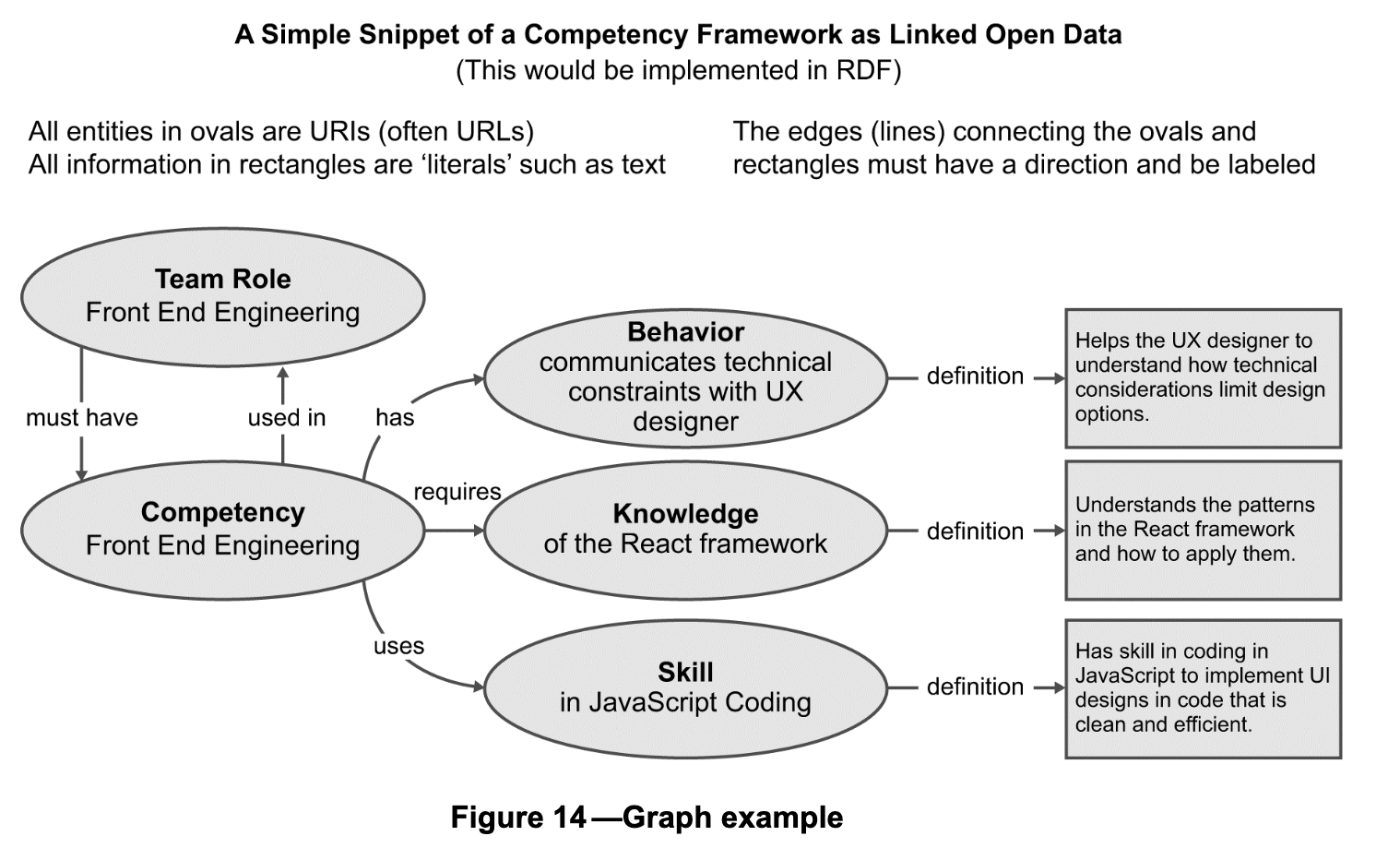IEEE Recommended Practice for Defining Competencies Now Available
Steven Forth is co-founder and managing partner at Ibbaka. See his skill profile here.
If skills are the currency of the new workforce than competencies and competency frameworks are how these get organized and connected to jobs and roles. Competency frameworks play a big role in everything from roles and skill assessments (one of the key ways the Ibbaka Talio platform is used), to the design of career paths and learning paths. They inform everything from job architectures to curriculum development.
There has been a lot of confusion in the world as to what these frameworks are, how they are changing and how people are using them. In 2020, a group of us gathered together to address this confusion and help people from the many different stakeholder communities align.
The IEEE has now published this work as the Recommended Practice for Defining Competencies.
This guide is the product of the collective expertise of a wide community. The work was led by Eric Shepherd, Linda Steedman and myself (Steven Forth) with contributions from many others, including Dennis Green and Jennifer Rogers who authored sections. Dennis did amazing work pulling the document together and unifying the language while Jennifer also led the review committee.
People from the private sector, academia and non profits all participated, as did people who design competency frameworks, people who put them to use and software engineers responsible for building systems to make the frameworks come to life in a digital world.
You can purchase the standard here (this is the IEEE, they charge for standards).
The era where competency frameworks were locked up in PDFs and spreadsheets is dead. Systems like Ibbaka Talio are transforming how competency frameworks are designed, managed, applied and shared.
Here are a few things I would like to call out about IEEE 1484.20.2.
Definitions of competency and skill
Let’s use the definitions in this document for common terms. It will make all of our lives easier if we use the same words for the same things. For example, skills and competencies.
competence: The ability to perform an activity or task, or groups of activities or tasks. Competence may require performance at a specified level or in a specified fashion.
competencies: The plural of competency and describes the set of skills, knowledge, abilities, attitudes, behaviors, and habits of practice required in the performance of an activity or task within a specific context.
competency: The set of skills, knowledge, abilities, attitudes, behaviors, and habits of practice required in the performance of an activity or task within a specific context.
competency definition: A resource that includes a statement that describes a competency and may include a specific context and reference definitions of potential levels of proficiency.
competency framework: A collection of competency definitions and additional related information used to serve a specific need of an individual, organization, or community.
skill: The capacity to effectively use cognitive and physical abilities to perform a task or activity.
The different pieces are pulled together in this diagram.
Linked Open Data for Skills and Competencies
The document advocates that competency definitions be provided as Linked Open Data. This means that they should be …
Discoverable: The ability to search for competencies is supported by hosting and integration. The configuration of the hosting application and how integration is implemented determines how easy it will be to locate competencies.
Transformable: Regardless of the data format used to store competency definitions and frameworks, machine-readable competency definitions can be cross-walked and transformed to other data models.
Tradeable: Integration can support an ecosystem where competencies can be exchanged between organizations.
Understandable: In addition to having well-written and well-tagged competency definitions and frameworks, the understanding of competencies is sometimes enhanced through alignment, which can provide additional context for use and interpretation.
Informative: Competency definitions and frameworks inform other activities such as courseware and assessment development. Linking systems can provide useful alignment with competency management and other systems.
Transparent: Where and how competencies are hosted and how the systems in which they are integrated support discovery and integration contributes to transparency.
The World Wide Web Consortium’s Five Star Linked Open Data (W3C) provides a way to frame different levels of Linked Open Data. Competencies should be Five Star Linked Open Data unless there is a reason for them not to be.
☆ Data is available on the web, in whatever format
☆☆ Available as machine-readable structured data (e.g., not a scanned image)
☆☆☆ Available in a non-proprietary format (e.g., CSV, not Microsoft Excel)
☆☆☆☆ Published using open standards from the W3C (RDF and SPARQL)
☆☆☆☆☆ All of the above and links to other Linked Open Data
Let’s get competency definitions and frameworks to five stars! This is one of our goals for Ibbaka Talio.
Recommended Practice for Defining Competencies Table of Contents
Here are the main parts of the recommendation.
Clause 1—Overview
This section explains the concepts and value of using well-defined competencies and sets the context for the remainder of the document. Normative referencesNot applicable for this document.
Clause 2—Definitions, acronyms, and abbreviations
The vocabulary used within competency definitions is, by its nature, precise and specific and this section promotes a specific vocabulary to assist stakeholders to align without debating the meanings of specific words.
Clause 3—Writing competency definitions
This section provides guidance for writing competency definitions and includes principles for transferring and transposing competency definitions for different uses.
Clause 4—Competency frameworks
This section provides the context for the information found in competency frameworks, including the relationships with and between competency definitions and other competency frameworks. Informative annexes
Annex A—Applications
This section represents how various roles and stakeholders benefit from using well-defined competencies to achieve individual, team, organizational, and community objectives.
Annex B—Hosting, alignment, and integrations
This section explains how well-defined competencies are stored, placed, and used within the context of larger ecosystems.
Annex C—Lifecycle management
This section guides operational processes and governance structures designed to ensure proper lifecycle management of competency frameworks and the components within them.
Annex D—Examples of registries and repositories
This section provides a list of examples of registries and repositories that contain multiple competency frameworks and related information.It is hoped that readers will reference this recommended practice when they encounter issues and need to refresh their understanding.





